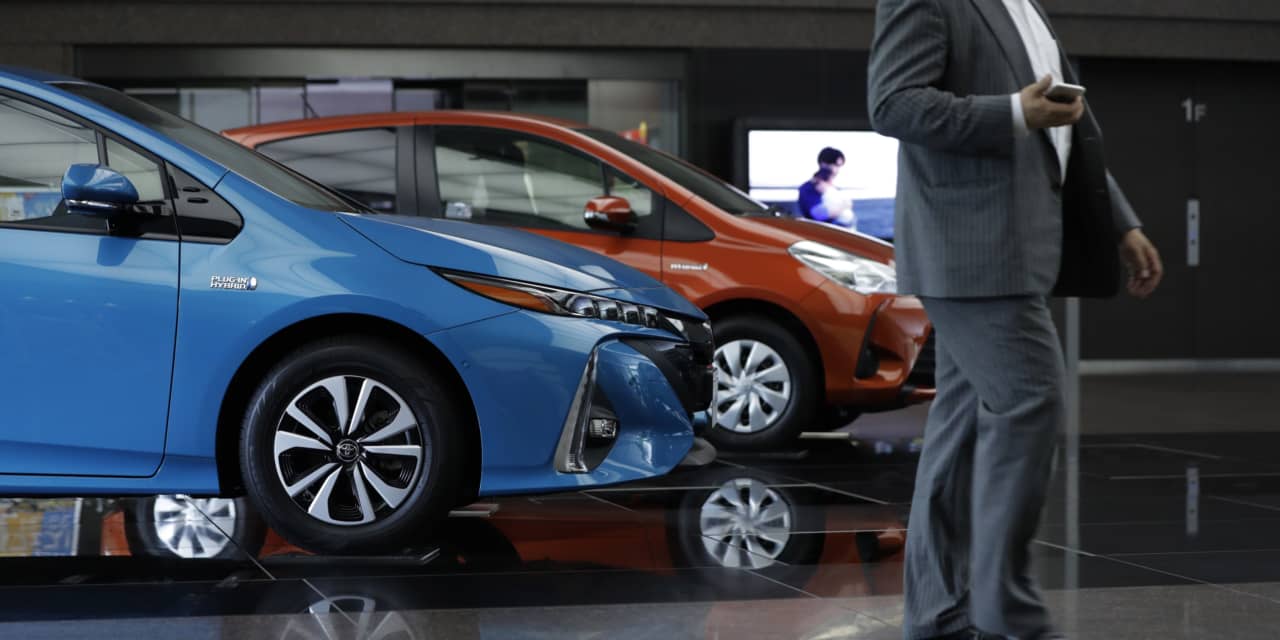The car market has been confusing lately, but it doesn’t have to be.
A slew of trends have made the big picture harder to see. Sales of battery-electric vehicles are at record levels, but there are too many of them and not enough cheaper models. Shares of hybrid king
Toyota Motor
are at a record, while
Tesla
stock languishes.
But the main point is that all efficient automotive technologies are doing just fine. More battery-electric vehicles, plug-in hybrid cars, and mild hybrid vehicles—think the original Prius—will be sold in 2024 than in 2023. That’s a solid backdrop for a lot of car stocks.
Demand Around the World
In 2023, roughly 13.3 million cars that plug in were sold in the U.S., Europe, and China. Those three regions account for more than 60% of global light vehicle sales. That 13.3 million figure was up 34% compared with 2022.
About 9.3 million battery-electric vehicles, or BEVs, were sold, for a gain of 30%. Sales of plug-in hybrid electric vehicles—PHEVs to acronym collectors—rose about 46% to four million.
The Hybrid Horse Race
Not all hybrid vehicles are created equal. So-called mild-hybrids don’t plug in; there is never any chance drivers can avoid the gas station. In a PHEV, drivers can go all-electric for 20 or 30 miles, theoretically passing the gas station for long periods. BEVs, of course, never go to the gas station—unless it’s for a bag of chips or air in the tires.
Sales of all types of hybrids in the U.S. and Europe came in at almost six million units in 2023, up 26% year over year. The China Passenger Car Association data tracked by Wall Street don’t include numbers on mild hybrids.
That makes some sense. Chinese analysts have less reason than their counterparts in the U.S. and Europe to think about traditional hybrids. BEV and PHEVs accounted for more than one-third of the overall market in 2023, compared with about 23% in Europe and 10% in the U.S.
Why Growth Isn’t Enough
In the U.S., sales of BEVs grew roughly 46%, just faster than sales of mild hybrids. Sales of PHEVs increased about 31%.
More growth is forecast. Cox Automotive expects EVs to account for about 24% of total light vehicle sales in 2024, up from about 17% in 2023. That implies about 40% growth for both BEVs and all hybrids.
Growth like that seems to fly in the face of the dour sentiment among U.S. auto investors that has sent EV-related stocks lower. But demand is only part of the picture; the supply of cars is equally important.
Auto makers overproduced BEVs for the U.S. market, partly because government subsidies made it harder to know how many people really wanted to buy.
Overall, Cox expects modest gains for overall U.S. car sales. That’s similar to other forecasts for other regions around the world.
Citi analyst Jeff Chung expects Chinese BEV sales to grow about 16% in 2024. PHEV sales should be up 50%, according to the analyst.
S&P Global expects BEV sales to be up about 40% in 2024.
What’s Up With the Stocks?
If sales growth continues, as the various forecasts indicate it will, that would be good for Tesla, the U.S.,’s biggest EV maker. The problem is that Elon Musk’s company is between “major growth waves,” as Tesla has said. Deliveries have grown more than 40% a year on average since the introduction of the Model Y in 2020. Growth is expected to average about 20% for the coming two years.
Tesla needs another lower-priced model.
Slowing growth is a big reason Tesla shares were off about 23% year to date as of midday Friday, underperforming the
Nasdaq Composite
by about 30 percentage points.
Investors in traditional auto makers such as
Ford Motor
and
General Motors
should focus on a different number: 16 million. That is roughly the number of cars expected to be sold in the U.S. in 2024, marking a small gain from 2023. Growth is good.
Toyota shares, up more than 50% over the past 12 months, are yet another story. investors have to decide whether they want to pay more than 10 times earnings for an auto maker when Ford and GM trade for roughly half that amount.
Toyota shares have traded for an average of about nine times over the past few years.
Write to Al Root at [email protected]
Read the full article here




